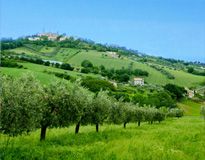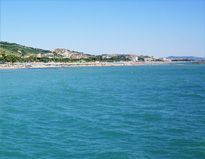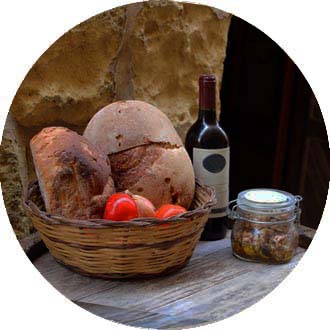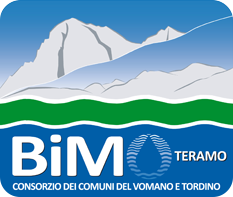"Capital of ceramic art of Abruzzo" is the most appropriate definition to describe the characteristic mountain village, located about 500 m s.l.m. on a spur at the confluence of the river Leomogna with the Rio ditch is framed by hills and mountains covered with lush forests and dominated by Monte Camicia, Prena, Brancastello and Gran Sasso.
It is famous throughout Italy but also abroad for the long and glorious tradition linked to ceramics, so much so that almost all the native families are engaged in this sector and in the Municipality there are the Museum of ceramics and the artistic high school for design of ceramics, which provide an important impetus to the ancient and glorious tradition.
Castelli is one of the oldest villages of the Teramo Apennines. Its territory was already inhabited by Italic peoples, while in the Roman period it was included in the Aager Atrianus under the direct dependence of Atri, the most faithful city in Rome in Abruzzo. When the Western Roman Empire fell, the people of Abruzzo, even in this area, began to find shelter on the hills and mountains that offered more effective ways to defend themselves from looting and invasion from outside.
Also in the territory of Castelli this phenomenon was recorded and, in particular, from the valley below the current village, the inhabitants retreated on the most impervious hills of the Apennines, surrounded by lush woods that are difficult to penetrate. From here, therefore, the ancient toponym Li Castelli, made crystallized today in the municipal gonfalon in which three towers are represented on an open castle.
The presence of the Benedictines was fundamental for Castelli and the entire territory, and they made an active contribution to the life of the populations dispersed in a vast and difficult area through prayer, the care of the woods, the value of culture and small craftsmanship. through the use of clay for the construction of domestic tools. In 1340 Castelli, together with the county of Pagliara and the Valle Siciliana, was owned by the Orsini family and then underwent several changes of hands due to hostility and wars between France and
Spain for supremacy in Italy. In 1524, following the defeat of the French, the Orsini lost the barony that went to the Duke of Sessa and two years later was raised to the rank of marquisate at the behest of Emperor Charles V, who donated it to the Spanish general Ferrante Alarçon y Mendoza as a reward for his heroic behavior during the battle of Pavia. Castelli was then integrated into the Marquisate of the Sicilian Valley and remained there until the end of feudalism in the early nineteenth century.
In addition to the typical dishes of the mountain cuisine of Teramo, a typical dish of Castelli consists of "tacconelle" that are obtained by kneading the flour of wheat with water and eggs, flattening the mass with a rolling pin and cutting it in irregular shape (for this they are also known as "maltagliati") and seasoned with pork sauce, preferably white. The traditional recipe provides that they are accompanied by the "voliche", a type of vegetables that can be found in the woods surrounding the village.
Market: Monday
Twinning: Cerreto Sannita (entrambe città della ceramica).
Website: http://www.comune.castelli.te.it/
- Befaro
- Carrara
- Case Sparse
- Castelli (City)
- Colledoro
- Convento
- Faiano
- San Rocco
By Car
from the A14 (exit at the toll booths of Teramo / Giulianova or Roseto degli Abruzzi) from which it is about 40 km or from the A24 Roseto - Rome - L'Aquila - Teramo, with the exit at Colledara / San Gabriele, from which is 13 Km. It is also possible to cross the foothills, scenic and suggestive that connects the country with the side of L'Aquila (Campo Imperatore) and Pescara (Rigopiano, Farindola, Penne).
 en
en 


















